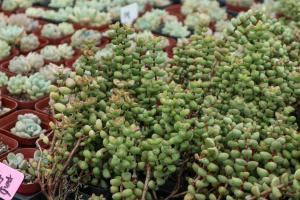How to Winterize Outdoor Potted Plants
Winter can be harsh on outdoor potted plants, especially those that are not designed for cold climates. As the temperatures drop, it is important to take the necessary steps to protect your plants, so they can survive until spring. Here are some tips for winterizing your outdoor potted plants:
Choose the Right Pots
Before you choose the plants you want to winterize, think about the pots they are in. The right pot can make all the difference in keeping your plants healthy through the winter. Look for pots that are heavy, sturdy, and made of a material that can withstand winter weather, such as ceramic or concrete. Avoid plastic pots and ones with intricate designs that can crack in freezing temperatures.
Move Plants to Sheltered Locations
During the winter, your potted plants should be moved to sheltered locations to protect them from wind, snow, and ice. This might mean moving them closer to your house or wrapping them in burlap to protect them from the elements. Keep them away from areas of your yard that are prone to flooding or that receive direct exposure to the winter sun.
Water and Fertilize Appropriately
When it comes to winterizing potted plants, proper watering and fertilization are important. Make sure your plants have enough water to keep their soil moist, but not wet, throughout the winter. This may require you to water them less frequently than you would during the growing season. Avoid over-fertilizing, as this can lead to excessive growth and weakened plants that are more susceptible to cold weather damage.
Wrap Plants in Insulation
Wrapping your plants in insulation can help protect them from the cold temperatures of winter. There are many different types of insulation you can use, such as burlap, straw, or bubble wrap. Make sure to leave some ventilation so that moisture doesn't get trapped inside the wrapping and damage your plants. Be sure to remove the insulation once the weather warms up in the spring.
Prune Your Plants
Before winter sets in, it's a good idea to prune your potted plants to remove any dead or diseased parts. This will help promote new growth when the warmer weather returns in the spring. Make sure to use sharp, clean pruning shears to prevent damage to your plants. Be sure to dispose of any pruned branches and leaves far away from your plants to prevent the spread of disease.
Conclusion
Winterizing your outdoor potted plants may seem like a lot of work, but it's worth it to protect your investment and keep your plants looking healthy and beautiful. By choosing the right pots, moving your plants to sheltered locations, watering and fertilizing appropriately, wrapping them in insulation, and pruning before winter sets in, you'll give your plants the best chance of surviving until spring arrives. Don't forget to check on them throughout the winter and water them if necessary, and you'll be rewarded with healthy, vibrant plants when warmer weather returns.

 how many times do yo...
how many times do yo... how many planted tre...
how many planted tre... how many pine trees ...
how many pine trees ... how many pecan trees...
how many pecan trees... how many plants comp...
how many plants comp... how many plants can ...
how many plants can ... how many plants and ...
how many plants and ... how many pepper plan...
how many pepper plan...































